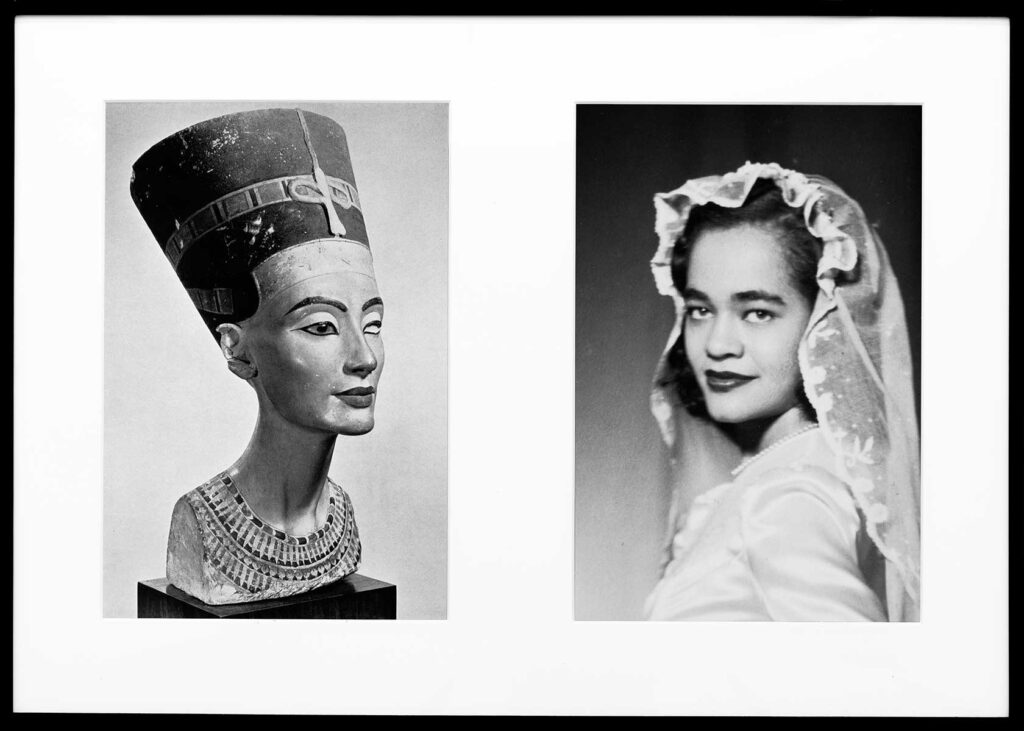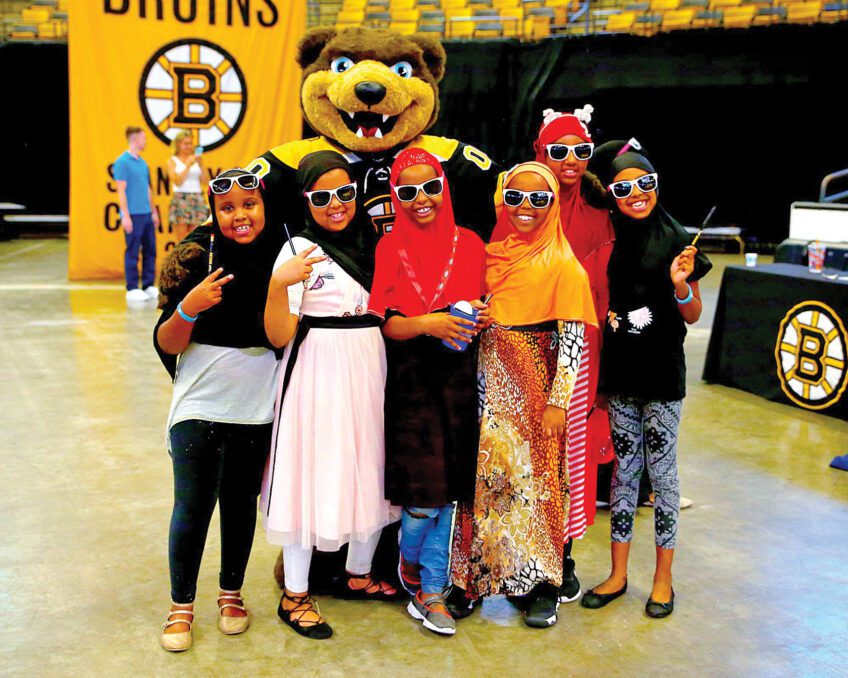Lorraine O’Grady — challenging the either/or in ‘Both/And’ exhibit

Renowned conceptual artist Lorraine O’Grady, 89, a Roxbury native whose West Indian parents emigrated from Jamaica, has made her mixed-race heritage a springboard of her art.
A star student at Girls’ Latin School, O’Grady entered the class of 1955 at Wellesley College as the first recipient of a full aid scholarship based on merit and need. After successful careers as a research economist, literary and commercial translator, and rock music critic, at age 45, while teaching French literature at the School of Visual Arts in New York City, O’Grady turned to the arts.
In life and in art, O’Grady has challenged boundaries imposed by gender, class and race. As she connects her personal story with a larger story of the African diaspora, O’Grady embraces the diptych form, which she says couples “two things that are related yet dissimilar in a position of equality.” She calls the form “my weapon of choice to oppose the West’s either/or binary, which is always exclusive and hierarchical.”
An absorbing survey of O’Grady’s works in performance, installation, photography, writing, collage and video is on view through June 2 in a major retrospective, “Lorraine O’Grady: Both/And,” at the Davis Museum of Wellesley College. The exhibition and abundant related programming are free and open to the public.
The retrospective originated at the Brooklyn Museum in 2021, developed by senior curator Catherine Morris and writer Aruna D’Souza, who together edited its handsome, in-depth catalog. The exhibition was organized for the Davis Museum by Amanda Gilvin, the museum’s Sonja Novak Koerner ‘51 senior curator of collections and assistant director of curatorial affairs.

Lorraine O’Grady (American, born 1934). Art Is . . . (Girl Pointing), 1983/2009. Chromogenic photograph in 40 parts, 20 × 16 in. (50.8 × 40.64 cm). Edition of 8 plus 1 artist’s proof. © Lorraine O’Grady/Artists Rights Society (ARS), New York
Nine interconnected galleries enable visitors to experience recurring threads in O’Grady’s works over four decades.
“Rivers, First Draft, or The Woman in Red” (2015) presents scenes from O’Grady’s August 18, 1982 performance in a wooded glen by a stream in Central Park. Its 48 panels follow three characters, the Little Girl with Pink Sash (the artist’s childhood self), the Teenager in Magenta (her as an adolescent), and the Woman in Red (the adult O’Grady) as they overcome obstacles and finally unite and walk down the stream together.
Photographs show O’Grady’s best-known persona, Mlle Bourgeoise Noire (Miss Black Middle Class) making her 1980 debut by invading several gallery openings attired in a tiara and a white gown made out of 180 pairs of white gloves, shouting poems of protest; and in 1983 as she curates “The Black and White Show,” which presented works in black and white by an equal number of artists representing both races. An exuberant wall installation, “Art Is…” (2009), renders scenes from Mlle Noire’s exuberant finale, commanding a float in the 1993 Afro-American Day Parade in Harlem, while assistants photographed parade onlookers posing in gilded frames. Their joyful participation in art-making was O’Grady’s rebuke to a non-artist colleague’s remark that avant-garde art “doesn’t have anything to do with Black people.”
In her suite of 16 diptychs, “Miscegenated Family Album” (1994), O’Grady pairs photographs of her older sister, Devonia, who died at age 37, and Devonia’s daughter Candace, with images of Egyptian Queen Nefertiti and her daughters, showing poignant similarities between families across millennia.
A meditative video, “Landscape (Western Hemisphere)” (2010/2011), focuses on the varied textures of O’Grady’s hair as it churns to the sounds of wind, cawing wildlife, and urban noise. Nearby, a group of potent photo montages entitled “The Body is the Ground of My Experience” includes “The Fir-Palm” (1991/2019), in which a palm tree with fir tree foliage sprouts from a Black woman’s torso.
O’Grady’s latest persona, Lancela Palm-and-Steel, a figure in a conquistador-style suit of armor topped with a palm tree, stands in wait of new stories to come.






